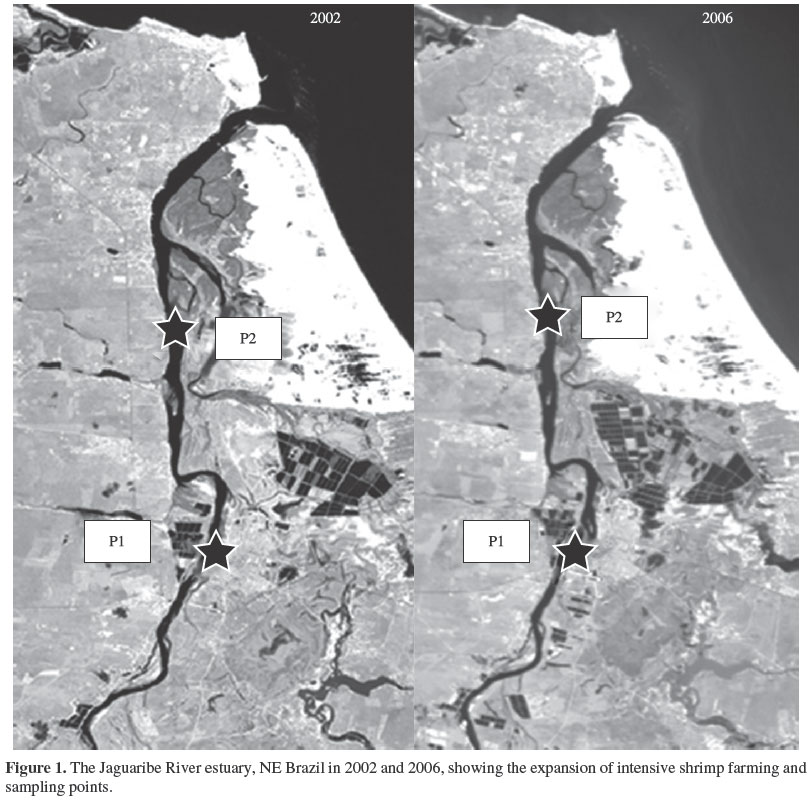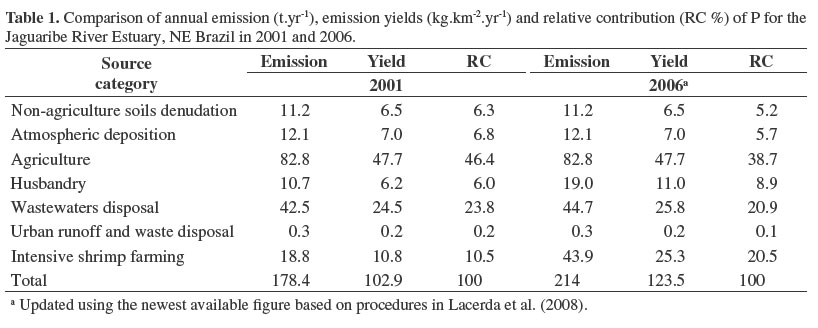This paper estimates annual P emission to the Jaguaribe River estuary, NE Brazil, responsible for approximately 30% of the country's farmed shrimp production. Emissions increased three times between 2001 and 2006 and reached 43.9 t.year-1. These emissions make aquaculture the third main source of P for this estuary and are much smaller than emissions from agricultural sources and slightly lower than emissions from wastewater. Their relative contribution also increased from 10.5% to 20.5%. Temporal variability of P concentrations in estuarine bottom sediments also suggest an increase, but not as evident as the emissions. The spatial distribution and speciation of P (total P and inorganic P) in sampling stations located upstream and downstream from the main aquaculture area confirmed the importance of this source. Inorganic P was the dominant form present in sediments downstream and showed an increase from 67% to 75% of the total P present in the sediment.
nutrients; emission; estuary; shrimp culture; wastewaters



